#Kuchipudi and Odissi dance
Text
Kuchipudi and Odissi dance

We sell Indian Dance Jewelry, Temple jewelry, Bharatanatyam costumes, Bharatanatyam jewelry, Indian dance costumes and ankle bells from US online store. Bharatanatyam Jewelry, Bharatanatyam Costume, Indian Dance Jewelry, Indian Dance Costume, Kuchipudi and Odissi dance, Dance Jewelry, Dance Costumes And Jewelry, Kathak jewellery online, Indian dance jewelry, Stone dance jewelry USA, Bharatanatyam dance practice, Dance costume and jewellery. https://www.dancecostumesandjewelry.com/
The Majesty of Temple Jewellery
Temple jewellery, steeped in tradition and devotion, derives its name from its origins in the temples of South India. Inspired by the grandeur of temple architecture and religious iconography, these ornaments exude timeless elegance and spiritual significance.
Our Services 24/7
Kathak dance and belly dance
Kuchipudi and Odissi dance
Bharatanatyam and Kuchipidi dance jewelry
Mohiniyattam dance jewelry
Brass plate for Kuchipudi dance
Bharatanatyam costumed female
Ankle bells
Flower Gajra and Rangoli
Hair and dance make up
Ankle bells for Bharatanatyam dance
Ornate Designs and Sacred Symbolism
Characterized by elaborate motifs of deities, celestial beings, and divine symbols, temple jewellery serves as a tribute to the gods and goddesses worshipped in Indian temples. Each piece, intricately adorned with auspicious symbols and religious motifs, embodies the essence of devotion and spirituality, making it a cherished heirloom for generations to come.
Timeless Beauty and Craftsmanship
Crafted using ancient techniques such as the lost wax casting method and the art of granulation, temple jewellery exemplifies the pinnacle of artisanal skill and precision. Meticulously handcrafted by skilled craftsmen, these ornaments showcase the finest quality of gold, silver, and precious gemstones, ensuring enduring beauty and timeless appeal.
Conclusion: Preserving Tradition, Embracing Elegance
At DanceCostumesAndJewelry.com, we are committed to preserving and celebrating the rich heritage of Kuchipudi jewellery and Temple jewellery. With our exquisite collection of handcrafted ornaments, we invite you to embark on a journey of elegance and tradition, where every piece tells a story of craftsmanship, culture, and timeless beauty.
0 notes
Text
it is so irritating to me that how these stupid dance shows do not have any respect for the classical dances like ?!?!? i bet u my whole fucking life that these stupid dance show's so called "judges" can't do any type of classical dance and yet they go on shitting stuff like "ur dance was nice but a fusion or a different form would be even better" from they mouth like yk what else would be better? u stop breathing. yeah.
like the amount of disrespect they show to these superior dance forms like Bharatnatyam and kathak and all by fusioning them with these so called international dances like no disrespect to international dance forms but they are in no way superior to our own classical dance forms. a classical dancer goes through so much during their dance trainings. a ballerina is respected because her foot suffers so much in her dance trainings learning ballet so why are these classical dancers not getting THEIR respect that they DESERVE. look at a classical dancer's feet. it would not be soft cute uwu rather it would be hardened and will have calluses that shows the years wirth of trainings and pains they suffered yet u want to mix that dance form with other dance forms? just bc u think that the classical dance form alone is 'boring'?
Art is something that is beyond culture and traditions, i agree but that does not mean one has to lose their originality, their identity to cater to someone else's standards. if a classical dancer only performs classical dance it is NOT 'boring', it is NOT 'less talented' than others. please stop. stop making it seem like a classical dancer needs to have some international dance forms mixed/fusioned with their original dance forms to looks more 'interesting'.
#classical dance#bharatnatyam#kathakali#kuchipudi#odissi#manipuri#kathak#dance shows#dance india dance
56 notes
·
View notes
Text
youtube
#classical dance#indian classical dance#Bharatnatyam classical dance#Kuchipudi classical dance#Kathkali classical dance#Sattriya classical dance#Mohiniattam classical dance#Odissi classical dance#Manipuri classical dance#Katthak classical dance#Bharat ke shashtriya nritya#Shashtriya nritya trick#Youtube
0 notes
Text
Indrani Rahman - India's first Miss Universe representative and a celebrated classical dancer."
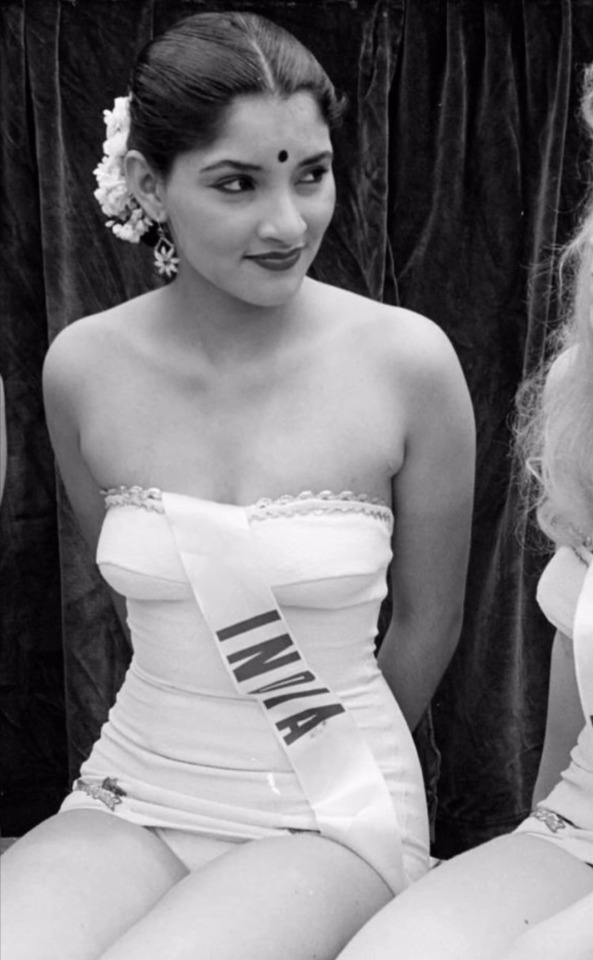
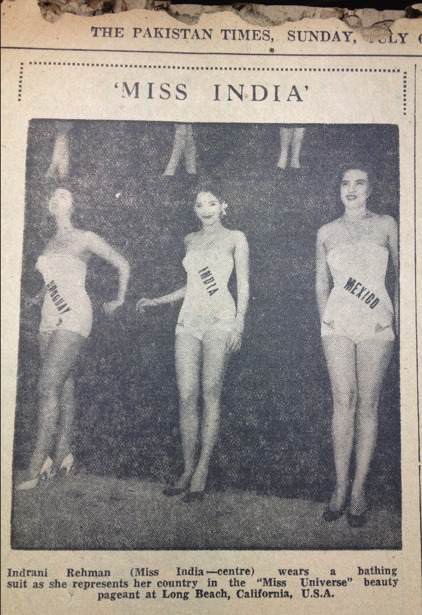

Indrani Rahman was all of 22 when she represented India at the first ever Miss Universe Pageant way back in 1952.
Indrani Rahman was the first Indian to participate in the Miss Universe pageant in 1952, representing India after winning the Miss India title the same year . She was born in Chennai (then Madras) on September 19, 1930, .She was a trained classical dancer in Bharatanatyam, Kuchipudi, Kathakali and Odissi, and popularized these dance forms in the West . She received the Padma Shri in 1969 and the Sangeet Natak Akademi Award
#desiblr#desi girl#being desi#desi aesthetic#indian aesthetic#indian history#beauty pageant#miss universe#indian dance#indian beauty#history#desi academia#desi culture#woman empowerment#indian women#indian#desi#Indrani Rehman#beautiful women#miss India#beauty with brain#desi core#modeling#desi fashion#fashion
148 notes
·
View notes
Text
Dances of India

Dance is an ancient and celebrated cultural tradition in India. Folk dances abound all across the country, and huge crowds of people can be found dancing at festivals and weddings. Dance and song features heavily in Indian cinema (so-called “Bollywood” films), too. But where does Indian dance draw its roots from? Here are six of the most important classical dance forms of India.
Classical Dances of India
Odissi
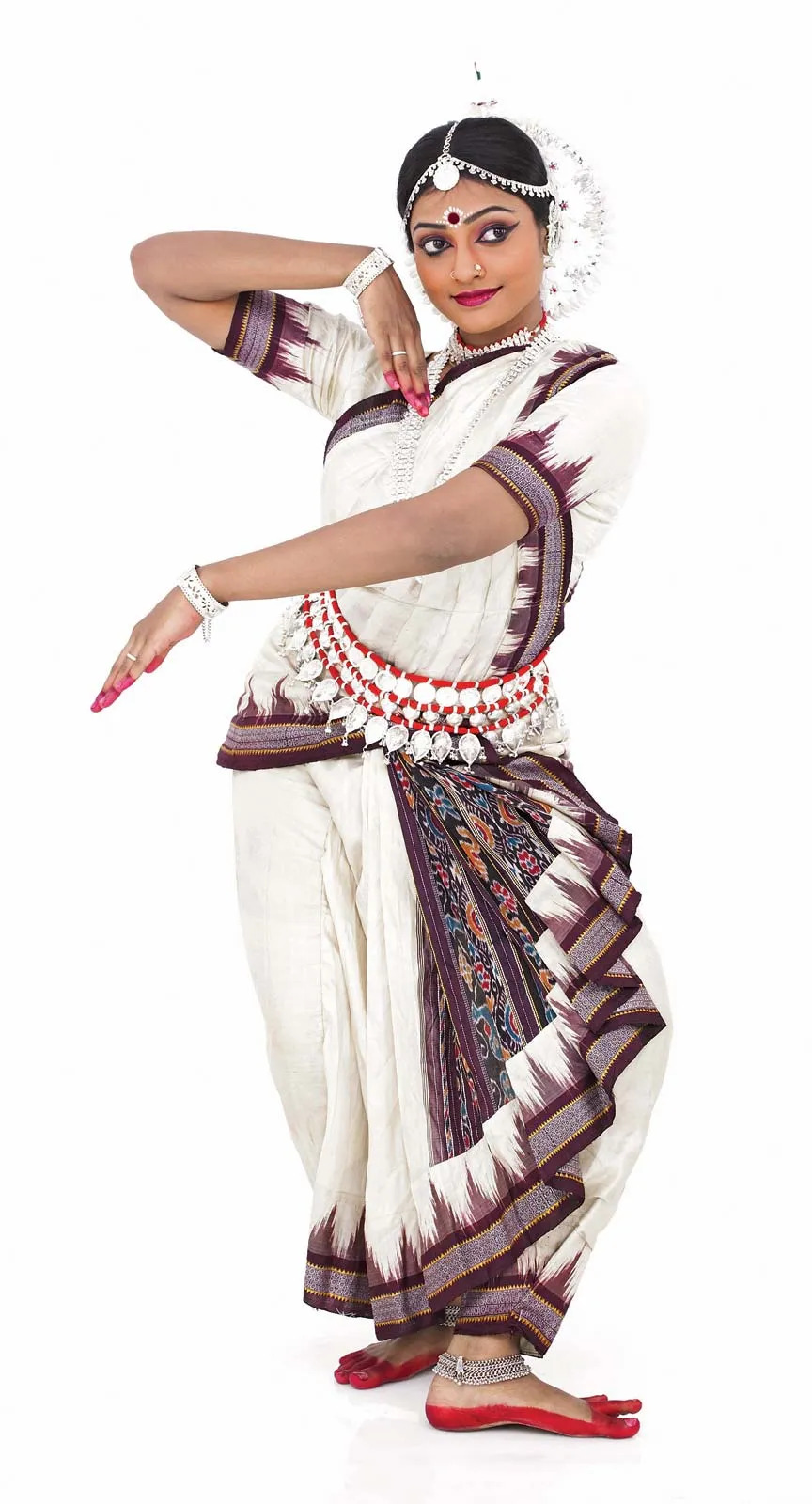
Dancer performing Indian classical odissi dance.
Odissi is indigenous to Orissa in eastern India. It is predominantly a dance for women, with postures that replicate those found in temple sculptures. Based on archaeological findings, odissi is belived to be the oldest of the surviving Indian classical dances. Odissi is a very complex and expressive dance, with over fifty mudras (symbolic hand gestures) commonly used.
Kuchipudi

Kuchipudi performance.
Unlike the other styles mentioned, kuchipudi requires talent in both dancing and singing. This dance, from the state of Andhra Pradesh in southeastern India, is highly ritualized, with a formalized song-and-dance introduction, sprinkling of holy water, and burning of incense, along with invocations of goddesses. Traditionally the dance was performed by men, even the female roles, although now it is predominantly performed by women.
Manipuri

Manipuri-style performance of Indian classical dance.
Manipuri comes from Manipur in northeastern India. It has its roots in that state’s folk traditions and rituals, and often depicts scenes from the life of the god Krishna. Unlike some of the other, more rhythmic dances, Manipuri is characterized by smooth and graceful movements. Female roles are especially fluid in the arms and hands, while male roles tend to have more forceful movements. The dance may be accompanied by narrative chanting and choral singing.
Kathak

Kathak school dancer, in Mughal costume, performing Indian classical dance.
A dance of northern India, Kathak is often a dance of love. It is performed by both men and women. The movements include intricate footwork accented by bells worn around the ankles and stylized gestures adapted from normal body language. It was originated by Kathakas, professional storytellers who used a mixture of dance, song, and drama. Like other Indian dances it began as a temple dance, but soon moved into the courts of ruling houses.
Kathakali

Kathakali dance
Kathakali comes from southwestern India, around the state of Kerala. Like bharatanatyam, kathakali is a religious dance. It draws inspiration from the Ramayana and stories from Shaiva traditions. Kathakali is traditionally performed by boys and men, even for female roles. The costumes and makeup are especially elaborate, with faces made to look like painted masks and enormous headdresses.
Bharatanatyam

Bharatanatyam performance
Bharatanatyam is a dance of Tamil Nadu in southern India. It traces its origins back to the Natyashastra, an ancient treatise on theatre written by the mythic priest Bharata. Originally a temple dance for women, bharatanatyam often is used to express Hindu religious stories and devotions. It was not commonly seen on the public stage until the 20th century. The dance movements are characterized by bent legs, while feet keep rhythm. Hands may be used in a series of mudras, or symbolic hand gestures, to tell a story.
6 Classical Dances of India | Britannica
36 notes
·
View notes
Text
I'll get so much hate for this but idc. Just read through before spewing brain rot. Open to discuss obviously.
I need y'all to stop with this cultural appropriation shit with bharatanatyam.
For people who don't know the discourse,
"Bharatanatyam is a culturally appropriated and sanitised form of Sadir-attam, a dalit art form".
Wrong on many levels.
1. Bharatanatyam is not the same as sadir. Sadir is considered a precursor but today's Bnat dancers are NOT dancing Sadir. In fact I can say that it is not even Natyam we are doing but that's another discourse
2. Sadir and devadasi/mahari culture was never dalit specific. Members of all castes learnt dance. Padmavati, Jayadeva's wife, was a devadasi and the daughter of a priest. Shantala Devi, the queen of the Hoysalas, was a former devadasi. I forgot the name but an Odia king (simha something. I read it for my junior exam) was a dancer. @ramayantika will know who I'm talking about being an odissi dancer. Y'all can be delulu about this but the proof is literally engraved in stone.
3. Bnat cannot be said is appropriating Sadir items into its fold with hundred percent certainty. Many of the items we perform now are introduced very recently. Many are taken from Kuchipudi. And Sadir itself is a product of Natyashastra. Devadasis danced to padams and javalis written by Brahmins.
5. Upper caste girls are predominantly dancers cos maybe they are the ones who stay in class. Y'all haven't had to sit on a desk convincing a parent to keep their recently "matured" daughter in class or try to tell them that boys can dance too (cos you naively assume misogyny) and them telling you in their caste "oNLy PrOstITuTes DaNcE".
And the worst part is y'all won't know shit about these things if you don't attend classes. This is not something you will find in Quint or whatever. You have to be there to know it.
Don't think that I am in any way denying casteism. I am way too well-read to do that shit atp and I have seen enough. But y'all wanna talk about caste in dance, talk about how lcs can't afford to attend classes because of systemic economic difficulties. Talk about stagnated uc male centric narratives in abhinaya pieces. Talk about the rampant superstitions and misogyny that keeps lc students from pursuing their art. Talk about the nepotism in the field and how it makes the system inherently rigged against outsiders, especially lcs who can't even claim a surname. Those are conversations worth having. Not your hot-takes with no basic fact checking.
13 notes
·
View notes
Text
from a (half) south asian american who's dark skinned, i think one of the best examples of south asian representation in video games as of recent is frye from splatoon 3.
i think they did so many things great with her. even though she's not really desi considering human culture has been extinct for over 1000 years in the splatoon universe, they did a great portrayal of her as a south asian. the inclusion of her dark skin really adds to that, because as someone who's half south indian, with dark skin, colorism and racism against dark skinned ppl in south asia is a really big issue, and is rooted in the caste system. and even though i doubt the inclusion of her dark skin was meant to break that stigma and stereotyping, it really adds to her regardless!
some other great examples of south asian influence in frye that makes her great rep:
- her singing in splatoon 3 is based on indian vocal music, especially carnatic (south indian) music. there's also traditional indian instruments such as sitar/veena, dholak, and nadaswaram used in songs where she performs. her dancing performance is also reminiscent of indian dances like bharatanatyam, odissi, and kuchipudi.
- her fighting style in her boss battle is based off of snake charming, using a pungi flute to control her moray eels to fight the player, in a manner similar to snake charming
- her outfit is based off of western-south asian or indo-western fashion and clothing, wearing a dupatta over what looks like a choli, and her pants resemble patiala pants. her headpiece also resembles mango chutney or another south asian condiment
- the locker decoration received from story mode that depicts her, sunken scroll 11, is based off of traditional indian art, especially from south india. the pose she strikes and the surrounding motifs are reminiscent of south indian and sri lankan sculpture and art depicting hindu figures; an example of a work of art similar to this depiction of frye is the bronze statue Shiva Natarāja, depicting the god shiva as nataraja, the cosmic lord of dance.
- and although i don't know for sure if her big forehead is based in south asian traditional beauty traditions, i still think it adds to her greatly as south asian representation. video game characters from any underrepresented culture are often depicted under western beauty standards, and frye's appearance that defies both western beauty standards AND colorist standards of south asian beauty truly makes her a great example of south asian rep in video games.
special thanks to twitter user rosierajin, who also compiled a list of examples of south asian influence in frye's character
anyways, that's my conclusion about why frye is an amazing example of south asian rep, hope you enjoy :3
#splatoon 3#deep cut splatoon#frye splatoon#splatoon frye#frye#desi#south asian#abcd#splatoon#representation
45 notes
·
View notes
Text
This trend but make it indian classical dance ✨💫
To all the eight classical dances of India.
Order
1. Bharatanatyam (Tamil Nadu)
2. Kuchipudi (Andhra Pradesh)
3. Kathakali (Kerala)
4. Odissi (Odisha)
5. Kathak (Uttar Pradesh)
6. Manipuri (Manipur)
7. Sattriya (Assam)
8. Mohiniyattam (Kerala)
Did I make my brother remember which dance form belongs to which state? YES.
#danceblr#Indian classical dance#desiblr#dance aesthetic#desi culture#indian desi#desi academia#dance academia#nritya#dancing#classical dance
75 notes
·
View notes
Text
culture of India
India, often referred to as the land of diversity, is a cultural kaleidoscope that has fascinated and enchanted people from across the globe for centuries. Its rich heritage, traditions, languages, art forms, and cuisines reflect a civilization that has evolved over millennia, leaving an indelible mark on the world. In this blog, we embark on a journey to unravel the multifaceted culture ,culture of India delving into its historical roots, religious practices, artistic expressions, and modern-day manifestations.

Historical Background:
The cultural history of India can be traced back to ancient times, with evidence of human habitation dating back to the Stone Age. The subcontinent has witnessed the rise and fall of numerous civilizations, including the Indus Valley Civilization, which flourished around 3300 BCE. Subsequent waves of migration and settlement by various ethnic groups, including Aryans, Dravidians, Greeks, Persians, and Mongols, contributed to the diversity of India's cultural landscape.
Religious Diversity:
India is the birthplace of major religions such as Hinduism, Buddhism, Jainism, and Sikhism, and has also been a melting pot of diverse faiths, including Islam, Christianity, Judaism, and Zoroastrianism. The religious tolerance and syncretism prevalent in India have resulted in a vibrant tapestry of rituals, festivals, and spiritual practices that coexist harmoniously. From the grand celebrations of Diwali and Eid to the solemnity of Buddhist retreats and Sikh gurdwaras, religion permeates every aspect of Indian life, shaping its customs, beliefs, and social structures.
Art and Architecture:
Indian art and architecture are renowned for their intricacy, symbolism, and spiritual significance. The ancient rock-cut temples of Ajanta and Ellora, the majestic forts and palaces of Rajasthan, and the exquisite carvings of temples in Khajuraho are testaments to India's rich architectural heritage. The country's artistic traditions encompass a wide array of mediums, including painting, sculpture, pottery, textiles, and performing arts such as dance, music, and theater. Classical dance forms like Bharatanatyam, Kathak, Odissi, and Kuchipudi, with their roots in mythology and spirituality, continue to captivate audiences worldwide with their grace and elegance.
Cuisien:
Indian cuisine is as diverse as its culture, with each region boasting its own unique flavors, ingredients, and cooking techniques. From the fiery curries of the south to the aromatic biryanis of the north, Indian food is a gastronomic delight that tantalizes the taste buds with its rich spices and bold flavors. Staples like rice, wheat, lentils, and vegetables form the foundation of Indian meals, which are often accompanied by chutneys, pickles, and dairy products like yogurt and paneer. Street food is also a ubiquitous part of Indian culinary
culture, offering a tantalizing array of snacks and sweets that cater to every palate.
Literature and Language:
India has a rich literary tradition dating back thousands of years, with ancient texts like the Vedas, Upanishads, and epics like the Ramayana and Mahabharata shaping the cultural consciousness of the nation. Sanskrit, the classical language of ancient India, has been the vehicle for some of the world's most profound philosophical and literary works. Over the centuries, regional languages like Tamil, Telugu, Kannada, Bengali, Marathi, Gujarati, and Punjabi have flourished, producing a wealth of literature in poetry, prose, and drama. The Indian diaspora has also made significant contributions to world literature, with writers like Salman Rushdie, Arundhati Roy, and Jhumpa Lahiri garnering international acclaim for their works.
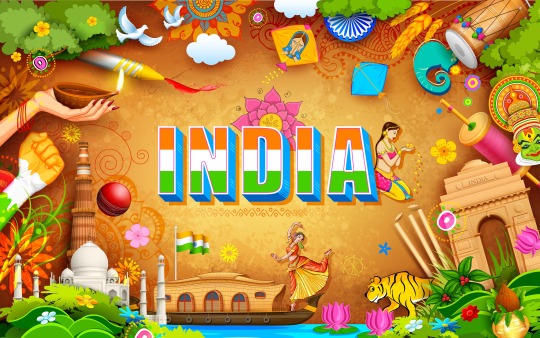
Modern Cultural Expressions:
While India's cultural heritage is deeply rooted in tradition and history, it is also a dynamic and evolving entity that continues to adapt and innovate in response to changing times. The advent of globalization, urbanization, and technology has ushered in new forms of cultural expression, from Bollywood films and indie music to contemporary art and fashion. Social media platforms like Instagram and YouTube have provided a platform for young Indian artists, musicians, and influencers to showcase their talents and connect with audiences around the world. Despite the challenges of modernization, India remains proud of its cultural heritage, embracing both tradition and innovation in equal measure.
Conclusion: India's cultural tapestry is a testament to the resilience, creativity, and diversity of its people. Across the length and breadth of the subcontinent, from the snow-capped Himalayas to the sun-drenched beaches of Kerala, the spirit of India's cultural heritage continues to thrive, enriching the lives of millions and inspiring generations to come. As we celebrate the vibrant mosaic of traditions, languages, and customs that make up the fabric of Indian society, let us also recognize the importance of preserving and safeguarding this invaluable legacy for future generations to cherish and embrace.
2 notes
·
View notes
Text
Bharatanatyam and Kuchipidi dance jewelry
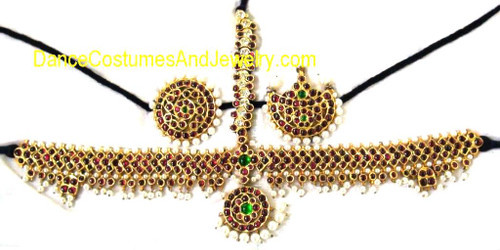
Kuchipudi Jewellery and Temple Jewellery
Introduction: Exploring the Rich Heritage of Indian Jewellery
At DanceCostumesAndJewelry.com, we take immense pride in showcasing the exquisite artistry and cultural heritage of Kuchipudi jewellery and Temple jewellery. These adornments, deeply rooted in tradition and symbolism, epitomize the beauty and grace of Indian craftsmanship.
The Allure of Kuchipudi Jewellery
Kuchipudi jewellery, named after the classical dance form from Andhra Pradesh, India, holds a special place in the realm of traditional Indian ornaments. Crafted with meticulous attention to detail, Kuchipudi jewellery is renowned for its intricate designs and vibrant hues. Adorned by dancers and enthusiasts alike, these pieces not only accentuate the grace of the dance but also symbolize cultural pride and tradition.
Kathak dance and belly dance
Kuchipudi and Odissi dance
Bharatanatyam and Kuchipidi dance jewelry
Mohiniyattam dance jewelry
Brass plate for Kuchipudi dance
Bharatanatyam costumed female
Ankle bells
Traditional Elements and Symbolism
Embellished with motifs inspired by nature, mythology, and religious iconography, Kuchipudi jewellery reflects the rich tapestry of Indian heritage. Each element, from the delicate peacock motifs to the auspicious symbols of Lord Ganesha and Goddess Lakshmi, carries profound significance, infusing every piece with spiritual energy and aesthetic appeal.
Craftsmanship and Techniques
Crafted by skilled artisans using age-old techniques passed down through generations, Kuchipudi jewellery exemplifies the epitome of craftsmanship. Intricate filigree work, intricate stone setting, and meticulous enameling are just a few of the techniques employed to create these masterpieces, ensuring unparalleled quality and durability.
0 notes
Text
Discover Chennai, Tamil Nadu: A Fusion of Festivals, Adventure, and Culture
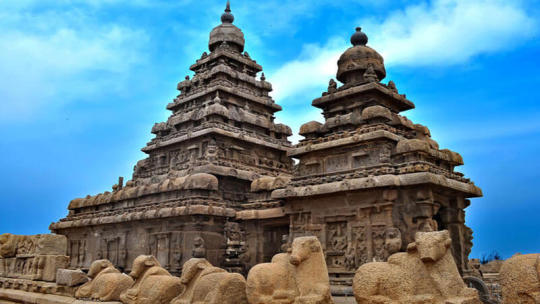
Chennai, the capital of Tamil Nadu, is a vibrant city known for its rich culture, stunning architecture, and bustling streets. From its beautiful beaches to its historic temples and vibrant festivals, Chennai offers a myriad of experiences for travelers. In this guide, we'll delve into the top reasons to visit Chennai, including its famous festivals, destinations, adventures, and rich cultural heritage.
Famous Festivals in Chennai:
Pongal: Pongal is one of the most important festivals in Chennai, celebrated to mark the harvest season. It is a four-day festival that includes traditional rituals, feasting, and cultural performances. The festival is known for its colorful kolam (rangoli) designs and delicious Pongal dishes.
Chennai Music Festival: The Chennai Music Festival, also known as the Margazhi Festival, is a celebration of classical music and dance. Held during the Tamil month of Margazhi (December-January), the festival features performances by renowned artists from around the country, attracting music lovers from far and wide.
Chennai Dance Festival: The Chennai Dance Festival is a showcase of classical dance forms, including Bharatanatyam, Kathak, Odissi, and Kuchipudi. The festival is held in various venues across the city and provides a platform for both established and emerging dancers to showcase their talent.
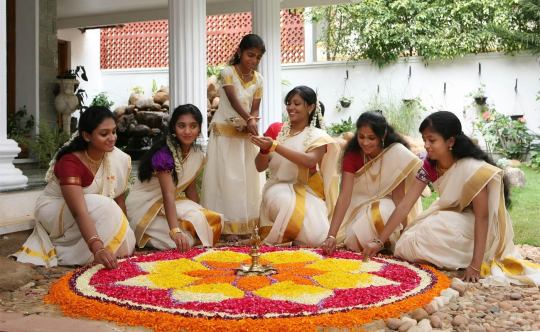
Reasons to Visit Chennai:
Rich Cultural Heritage: Chennai is steeped in history and boasts a rich cultural heritage. From its ancient temples and heritage buildings to its museums and art galleries, the city offers a glimpse into its illustrious past.
Stunning Beaches: Chennai is home to some of the most beautiful beaches in India, including Marina Beach, Elliot's Beach, and Covelong Beach. Whether you're looking to relax by the shore or indulge in water sports, Chennai's beaches have something for everyone.
Delicious Cuisine: Chennai is a food lover's paradise, with its diverse culinary offerings. From traditional South Indian dishes like dosa and idli to street food delights like vada pav and bajji, Chennai's food scene is sure to tantalize your taste buds.
Destinations in Chennai:
Marina Beach: Marina Beach is one of the longest urban beaches in the world and offers stunning views of the Bay of Bengal. The beach is a popular spot for locals and tourists alike, offering a peaceful retreat from the hustle and bustle of the city.
Kapaleeshwarar Temple: Dedicated to Lord Shiva, the Kapaleeshwarar Temple is a historic temple known for its Dravidian architecture and intricate sculptures. The temple is a must-visit for those interested in Chennai's religious and architectural heritage.
Adventure Activities in Chennai:
Water Sports: Chennai offers a range of water sports activities, including surfing, snorkeling, and scuba diving. The city's beaches are ideal for water sports enthusiasts looking for an adrenaline rush.
Trekking: Chennai is surrounded by several scenic hills and nature reserves that are perfect for trekking enthusiasts. Places like Yelagiri, Kolli Hills, and Nagalapuram offer exciting trekking trails with stunning views of the surrounding landscapes.
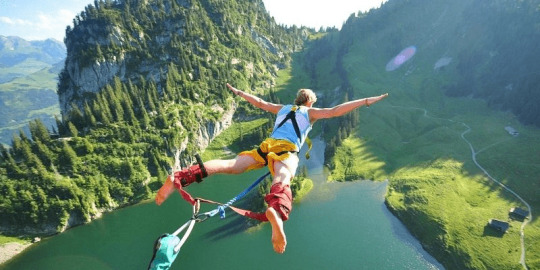
Conclusion:
Chennai, with its rich culture, stunning beaches, and vibrant festivals, offers a unique blend of experiences for travelers. Whether you're a history buff, a foodie, or an adventure seeker, Chennai has something for everyone. So, pack your bags and get ready to explore the vibrant city of Chennai, Tamil Nadu!
#india tour#india tour package#south India tour#Chennai tour Package#Tamil Nadu tour#Chennai Culture
0 notes
Text
"Grandeur Andal Kondai" with elegance, opulence, and traditional beauty @ Sagunthala Jewellers
"Andal Kondai" typically refers to a special decoration or adornment used in South Indian temples, particularly during important religious festivals and ceremonies. The "kondai" refers to a traditional hairstyle where the hair is tied up into a bun or a decorative arrangement.
Dancers often wear elaborate costumes and accessories that are appropriate to the style of dance they are performing. This could vary depending on the dance style, such as Bharatanatyam, Kuchipudi, Odissi, etc.
South Indian weddings are known for their intricate and ornate jewelry, hairstyles, and clothing.
This "grandeur andal kondai" signifies a sense of beauty, elegance, and cultural significance.
SAGUNTHALA JEWELLERS
For enquiries and Online/Whatsapp orders, kindly contact:
LandLine Phone: 044-24956495
Phone and WhatsApp:+91-8189840100/+91-7305873829
Website: www.onlinebigmart.com/SagunthalaJewellers
Visit Shop:
SAGUNTHALA JEWELLERS
No.38/46 North Mada Street, Mylapore, Chennai - 600 004 (Near Kapaleeshwarar Temple)
0 notes
Video
youtube
British Museum, the treasure-house of ancient civilisations, hosted Bharat-Natyam, Odissi, Kuchipudi and Kathak dancers in their Indian gallery.
Akademi presents APOTHEOSIS: Indian classical dance at the British Museum - Presented in collaboration with Akademi & The Motion Dance Collective, this spellbinding performance took place in the Sir Joseph Hotung Gallery of the British Museum on the evening 15 November 2019 to a live audience of over 1000 audience members. Devised in response to the Museum's South Asia collection, it brought the objects to life and charged them with the life-force they were created to hold.
https://youtu.be/THXy7orjLO4
0 notes
Text
What is Divine Dancing?
The influence of the Bhakti movement has been immense in shaping the depth of devotion in the arts. While some classical dances have natural affinity to Vaishnavism , some focus on Saivite themes and others on Sakti. While in the philosophy behind the Best dancing University in india one can assert the supreme validity of Advaita Vedanta, one has to accept in practice, both the Nitya (eternal substratum) and the Leela (play of the dynamic phenomena) as aspects of Brahman.
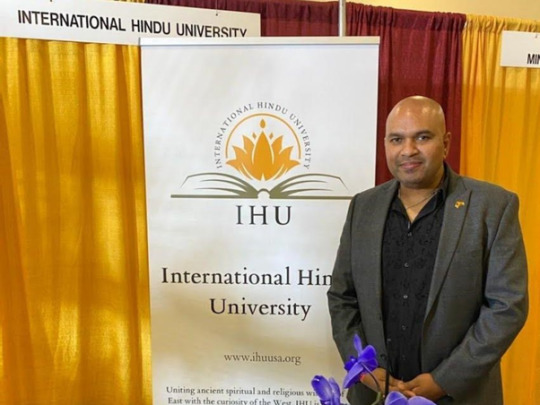
History of Divine Dance
The dance performed by Shiva's wife Parvati in response to Shiva's Tandava is known as Lasya, in which the movements are gentle, graceful and sometimes erotic. Some scholars consider Lasya to be the feminine version of Tandava. There are two types of Lasya, Jarita Lasya and Yauvaka Lasya. The Hindu scriptures narrate various occasions when Shiva performed the Tandava. When Sati (first wife of Shiva, who was reborn as Parvati) gave up her life in Daksha's sacrifice, Shiva is said to have performed the Rudra Tandava to express his grief and anger.
Type of Divine Dance
In Kathak dance three types of Tandavas are generally used, they are, Krishna Tandava, Shiva Tandava and Ravana Tandava, but sometimes a fourth variety - Kalika Tandava, is also often used. Bharatanatyam and Kuchipudi have variants of Krishna dancing his Tandava on Kaliya. The Manipuri dance is categorized as either "Tandava" (vigorous, usually go with Shiva, Shakti or Krishna as warrior-savior themed plays) or lasya (delicate,
usually go with love stories of Radha and Krishna). In the Krishna Tandava in Raslila performance of Manipuri dance is graceful yet with swift movement and acrobatic gestures. The Raslila also rendered the Rasalila or the Ras dance, is part of a traditional story described in Hindu texts such as the Bhagavata Purana and Gita Govinda, where Krishna dances with Radha and the gopis of Vraja. Rasalila has also been a popular theme for other India classical dances including Bharatanatyam, Odissi, Manipuri, Kuchipudi, and Kathak.Master in divine music degree courses
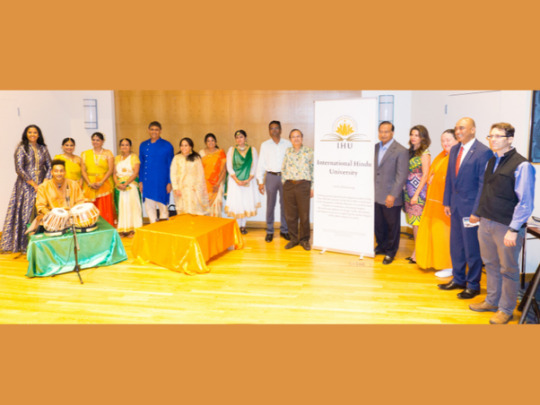
Best University for Divine Dance: International Hindu University
Divine Dancing will strive to develop into an international Centre of excellence in studies in Divine Dancing and a Centre of academic and professional excellence in the artistic area of Divine Dancing skills and competencies keeping in mind the developmental needs and aspirations of adolescents and youth to brush up their talent of art to maximize their abilities to be resilient and to work towards a sustainable and inclusive society embedded in the spiritual wisdom of Art & Kala. Our aim is to empower adolescents and youth with the skills and competencies to realize their potential and navigate their journey Best dancing University in USA and clarity of vision firmly based on values embedded in the Dharmic way of life. The University will develop a niche-expertise with primary focus in Vedic knowledge/practices and secondary focus in other India based knowledge systems that are part of Dharmic traditions.
Contact Us
Phone: +1-305 519 6083
Mail: [email protected]
Website: Best Universities In illinois & Neighbor States
1 note
·
View note
Text
Sandeep Marwah Presented Biju Patnaik International Awards for Women

New Delhi: History and our mythology of our country of India has taught us that we all must bow before women to be successful in all fields. If it is wealth & money bow before Mother Goddess Laxmi, if power then Mother Goddess Shakti, if security then Mother Goddess Kali and if art and culture then Mother Goddess Saraswati. True speaking, it is an education that teaches to respect women, support them to best and give them equal status in the community. Where there is no respect for women, that house, or community, or nation cannot progress,” said Dr. Sandeep Marwah Chancellor of AAFT University of Media and Arts at Bhumiputra Biju Patnaik International Women Empowerment Awards, an event organised by Dr. Chandana Raul Chairperson of art and culture society Aks at India International Centre.
There was a marvellous performance by Dr. Chandna Raul who is also the Odissi exponent herself. A musical and dance program by arts students of different colleges also impressed the audience which was followed by Award Function. Dr. Sandeep Marwah was first presented with award for his contribution to arts.
Padam Shri Vidushi Sumitra Guha Hindustani Classical Vocalist, Ambassador Dr. Shashi Uban Tripathi IFS, Dr. Shashi Tiwari Sanskrit Scholar, Anuradha Goel Chairperson PHD FWF & Prominent Social Worker, Prof. Rajni Abbi former Mayor of Delhi, Dr. Shobha Koser Kathak Exponent, Guru Smita Shastri Kuchipudi & Bharat Natyam Exponent, Prof. Bijaylaxmi Nanda Principal Miranda House, Pramilla Chabra Editor Delhi Diary, Naira Mkrtchyan from writer from Armenia were the awardees.
Film Director & Actor Prashanta Nanda Member Parliament Rajya Sabha, Actor Munna Khan Member Parliament Rajya Sabha, Prof. Balram Pani Dean of Colleges Delhi University, Dr. Ashish Kandhaway Director Swami Vivekanand Culture Centre Myanmar, Prof. Manoj K Khanna Proincipal Ramjas College, Prof. Vichtra Gupta Principal Motilal Nehru College, B.L.Gaur Auther Editor, Inderjeet Sharma Director International Hindi Association USA, Insang Song former Cultural Director Embassy of Korea were the guest of honour who all presented the awards.
“We feel honoured and complete by recognising the efforts of these legends in their respective fields of art and culture, education, and social work. This is one of the ways to appreciate artists and bring the importance of art and culture in the community,” said Dr. Chandana Raul thanking everyone for their participation.
#Biju Patnaik International Awards for Women at IIC New Delhi#Dr. Sandeep Marwah President of Marwah Studios
0 notes